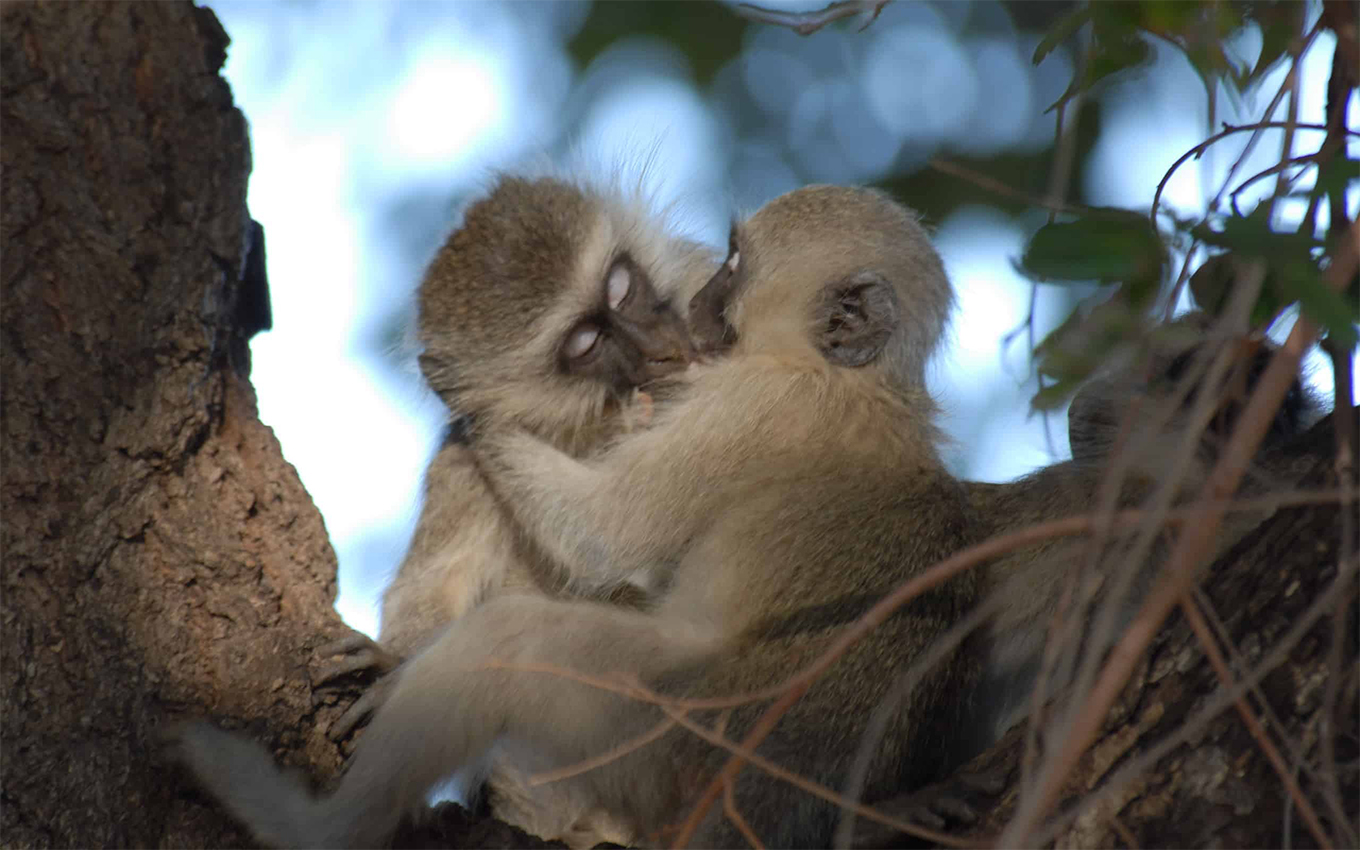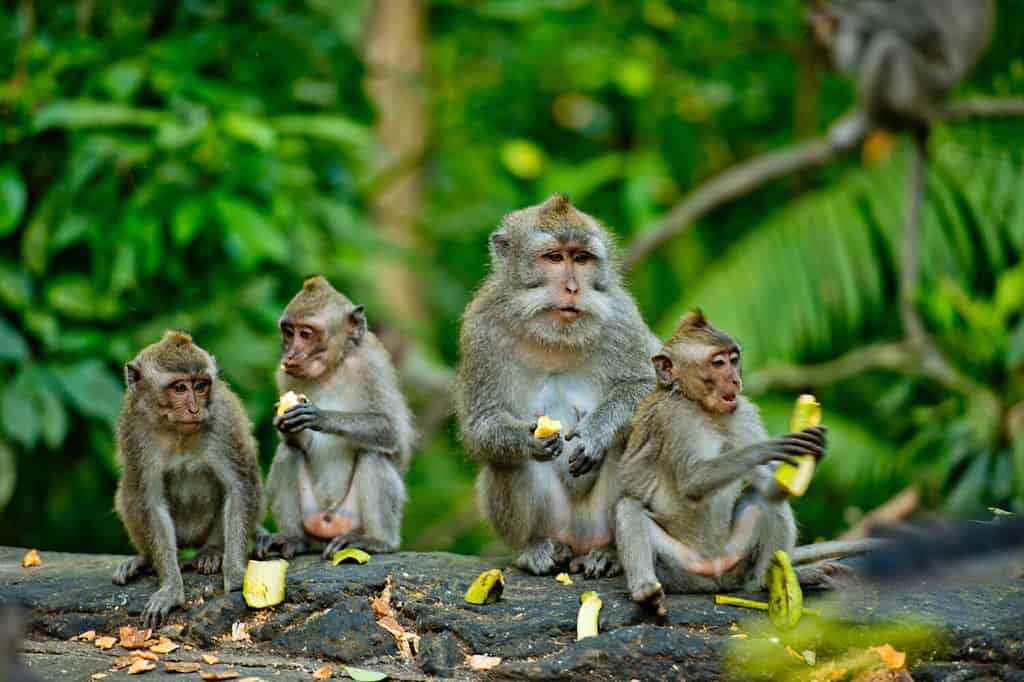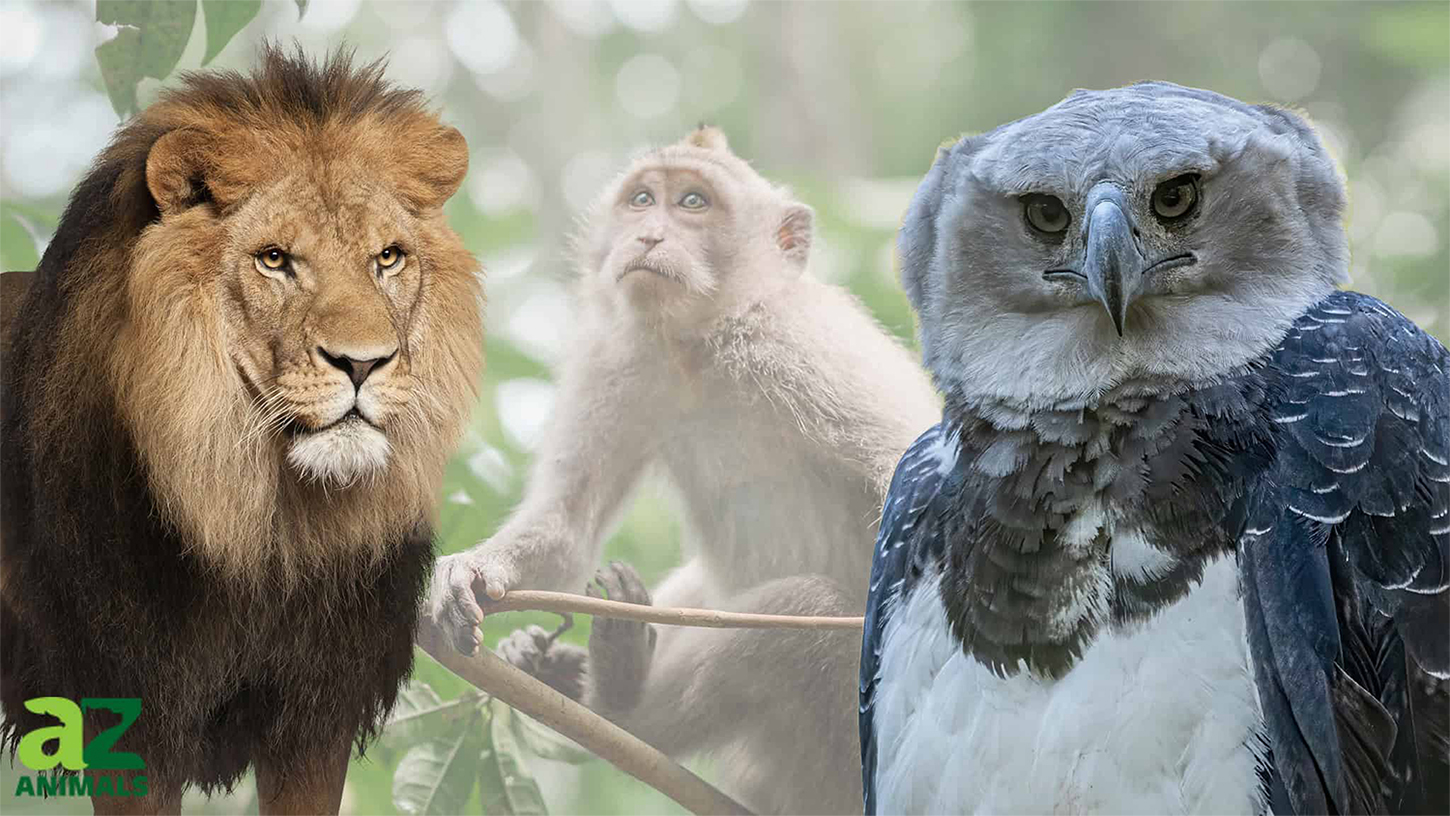In general, it is not a great idea to keep a monkey as a pet as they require very specialist care and expertise. However, that does not stop us from enjoying looking at them in specialist wildlife parks and zoos. There is no single species of monkey, there are hundreds of them divided into Old World Monkeys and New World Monkeys. Some well-known Old World Monkeys are macaques and baboons. New World Monkeys include capuchins, squirrel monkeys, and marmosets.
It’s interesting to be able to spot a male or female monkey and observe how they behave. So, here we have summarized the 7 key differences in male vs. female monkeys. However, bear in mind that the detailed differences will vary between species.
Both male and female monkeys are active, curious, and agile creatures who occupy a range of habitats on many continents. Key differences between male and female monkeys are their size, facial features, hair distribution, genital anatomy, sexual behavior, and learning.
Male vs. Female Monkey: Size
If we take capuchin monkeys as an example, adult males are larger in size compared to females. They also have a more robust and muscular build. Their neck is thicker and their shoulders are broader. In comparison, females are smaller and have a slender build. Similarly, adult male Barbary macaques way around 37.5 pounds compared to females who weigh around 28.4 pounds.
However, there is not always a size difference between the genders. Male and female marmoset monkeys are very similar in size. That said, the males have a slightly higher average weight.
Male vs. Female Monkey: Facial Features
When males and females of the same species have different facial shapes, it is termed sexual dimorphism. In many monkey species, including the capuchin monkey, the males have a larger and broader face. By comparison, the female has a narrower nose, and a less prominent brow ridge. In some species, including the Barbary macaque, the males have larger canine teeth. They often use these to display their dominance when competing with other males.
The males of other monkey species have smaller eyes, longer noses, and bigger jaws. There is even some evidence that males with more masculine facial features are more dominant, assertive, and more attractive to females. Masculine features are also associated with a greater bite strength!
Male vs. Female Monkey: Hair Distribution
Distribution of hair on a monkey’s body is very variable between the species but it can also vary with sex. For example, both male and female Hamadryas baboons have brown or light gray fur. The females have no hair on their brown faces. The males, on the other hand, have a mane (mantle) of long silvery hair and a bright pink face.
Male vs. Female Monkey: Genital Anatomy
One of the most reliable ways to differentiate between male from female monkeys is to look at their external genitalia. Male monkeys have a visible scrotum and testicles that are located below their tail. The genital opening in females is less prominent and there may be a small slit-like opening for them to pee. However, some female monkeys, such as the Barbary macaque, have a pink/blue swelling around their bottom area. This is called a perineal swelling and is not seen in males of the same species.
Male vs. Female Monkey: Sexual Maturity
Once monkeys reach sexual maturity, their reproductive behavior is dictated by their gender. In general, males tend to vocalize, mount other monkeys, and get involved in displays of dominance with other males. Male rhesus monkeys have been seen guarding females and interrupting mating activities by other males. In contrast, females tend to display receptive behaviors when they are fertile. They may present themselves to males and take part in meeting rituals.
Male vs. Female Monkey: Behavior
On the whole, male monkeys tend to be more territorial and assertive. They can be seen marking their territories by urinating or by making aggressive posturing. In contrast, female monkeys are more cooperative and get along better with each other.
Recent research has shown that there are physical differences between the brains of male and female capuchin monkeys. The male monkeys had an expansion of the brain area called the hypothalamus. This is responsible for maintaining body functions. The females, however, had an expansion in the area of the brain that is associated with attention, perception, and social behavior. The research further found that female monkeys relied on strong relationships with their relatives but competed for male attention. On the other hand, males were more concerned with social status and competing with males from outside the group.
Male vs. Female Monkey: Learning
Researchers have also discovered that there are differences in the ways in which some male and female monkeys learn skills. A study carried out on female vervet monkeys found that the group was only willing to learn from other females. This was probably because the females were perceived as a more reliable source of local knowledge because they stayed with the group. Males, however, left the group and lived in different places.




